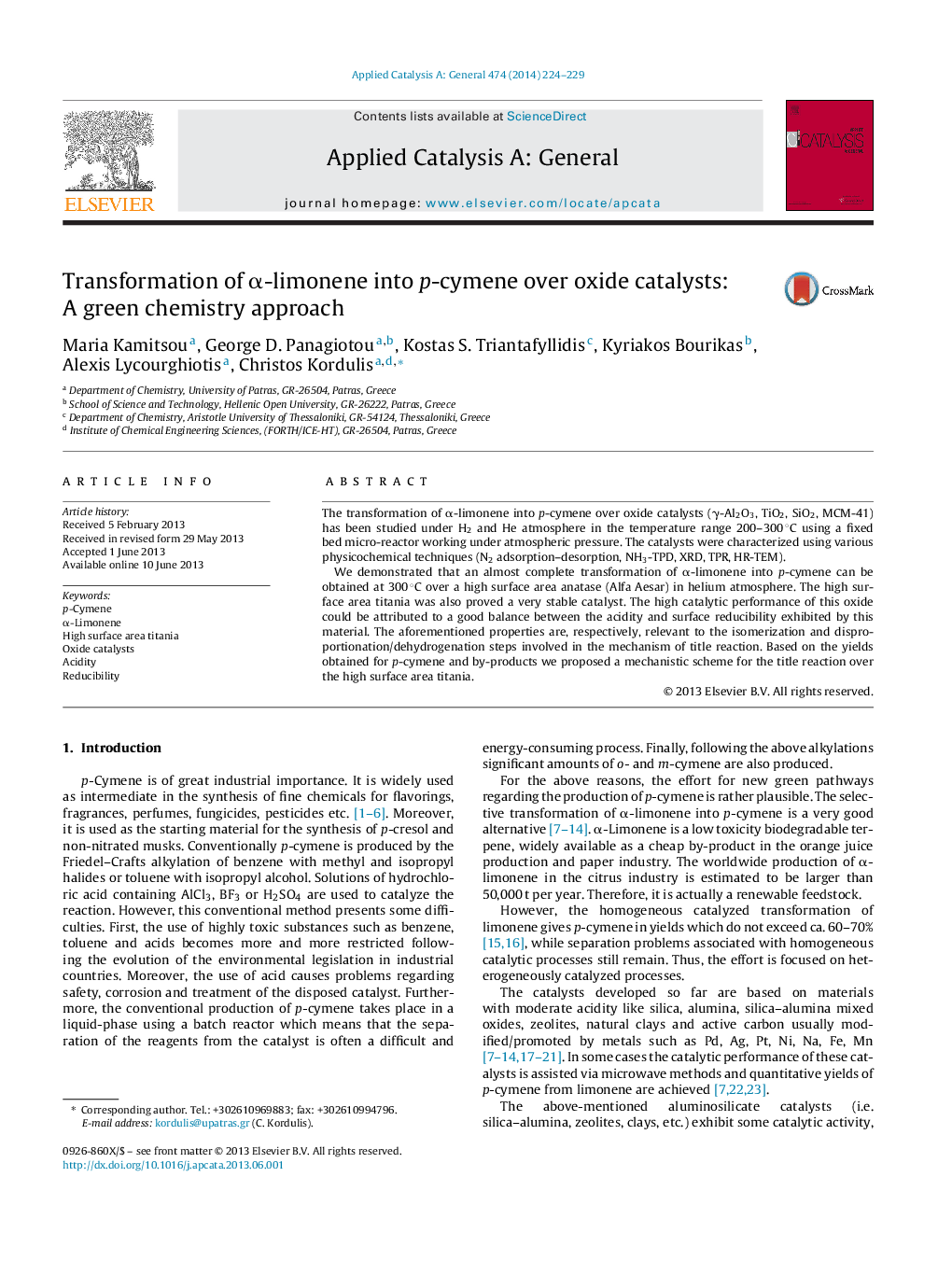| Article ID | Journal | Published Year | Pages | File Type |
|---|---|---|---|---|
| 39943 | Applied Catalysis A: General | 2014 | 6 Pages |
•Anatase is very active for selective transformation of α-limonene to p-cymene.•Its high performance is due to a good “surface acidity/reducibility” balance.•This high surface area oxide is also a very stable catalyst.•90% yield of p-cymene is obtained over TiO2 catalyst at 300 °C and inert atmosphere.
The transformation of α-limonene into p-cymene over oxide catalysts (γ-Al2O3, TiO2, SiO2, MCM-41) has been studied under H2 and He atmosphere in the temperature range 200–300 °C using a fixed bed micro-reactor working under atmospheric pressure. The catalysts were characterized using various physicochemical techniques (N2 adsorption–desorption, NH3-TPD, XRD, TPR, HR-TEM).We demonstrated that an almost complete transformation of α-limonene into p-cymene can be obtained at 300 °C over a high surface area anatase (Alfa Aesar) in helium atmosphere. The high surface area titania was also proved a very stable catalyst. The high catalytic performance of this oxide could be attributed to a good balance between the acidity and surface reducibility exhibited by this material. The aforementioned properties are, respectively, relevant to the isomerization and disproportionation/dehydrogenation steps involved in the mechanism of title reaction. Based on the yields obtained for p-cymene and by-products we proposed a mechanistic scheme for the title reaction over the high surface area titania.
Graphical abstractFigure optionsDownload full-size imageDownload high-quality image (199 K)Download as PowerPoint slide
